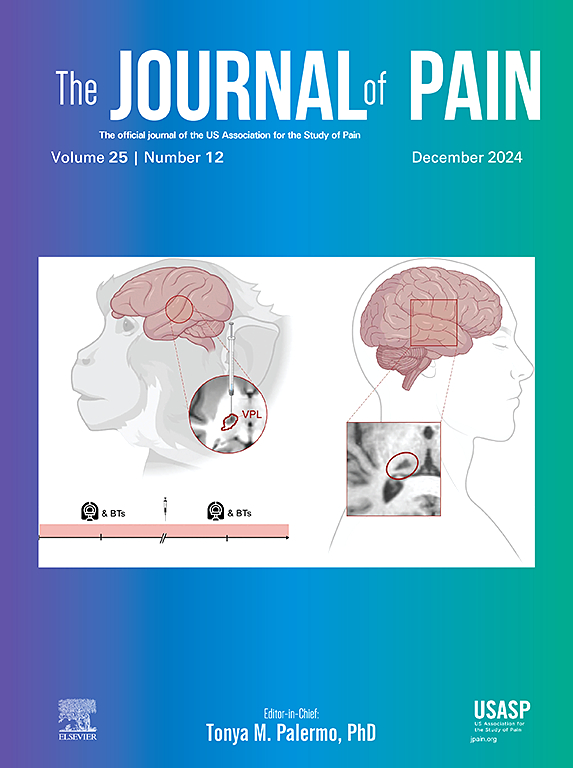脊柱疼痛或骨关节炎患者临床预测模型的 TRIPOD 声明需要改进:一项荟萃研究。
IF 4
2区 医学
Q1 CLINICAL NEUROLOGY
引用次数: 0
摘要
这项荟萃研究旨在评估脊柱疼痛或骨关节炎(OA)患者预测模型研究报告的完整性,即是否符合 "个人预后或诊断多变量预测模型透明报告(TRIPOD)声明"。我们在 MEDLINE、Embase、Web of Science 和 CINAHL 中搜索了脊柱疼痛或 OA 患者的预后和诊断预测模型。我们使用标准化评估表对纳入研究是否符合 TRIPOD 进行了评估。两名独立审稿人负责研究筛选和数据提取阶段。我们共纳入了 66 项研究。约有 35% 的研究声明使用了 TRIPOD。对TRIPOD的遵守率中位数为59%(IQR:21.8),其中方法和结果部分的报告情况最差。与背痛和 OA 研究相比,颈痛研究对 TRIPOD 的依从性更好(中位数分别为 76.5%、59% 和 53%)。在所有研究类型中,外部验证研究的总体依从性最高(中位数:79.5%;IQR:12.8)。申报使用 TRIPOD 的研究的总体依从性中位数比未申报的研究高出 4 个百分点。最后,我们没有观察到多年来依从性有任何改善。脊柱和 OA 领域的预测模型对 TRIPOD 的依从性很低,其中方法和结果部分的报告最差。未来有关脊柱疼痛和 OA 预测模型的研究应遵循 TRIPOD,以提高报告的完整性。观点:本文提供了66项脊柱疼痛或骨关节炎预测模型研究中遵守TRIPOD声明的数据。研究发现,TRIPOD声明的遵守率普遍较低(中位数遵守率为59%)。这种不充分的报告可能会对这些模型在临床实践中的有效使用产生负面影响。本文章由计算机程序翻译,如有差异,请以英文原文为准。
Improvements Are Needed in the Adherence to the TRIPOD Statement for Clinical Prediction Models for Patients With Spinal Pain or Osteoarthritis: A Metaresearch Study
This metaresearch study aimed to evaluate the completeness of reporting of prediction model studies in patients with spinal pain or osteoarthritis (OA) in terms of adherence to the transparent reporting of a multivariable prediction model for individual prognosis or diagnosis (TRIPOD) statement. We searched for prognostic and diagnostic prediction models in patients with spinal pain or OA in MEDLINE, Embase, Web of Science, and CINAHL. Using a standardized assessment form, we assessed the adherence to the TRIPOD of the included studies. Two independent reviewers performed the study selection and data extraction phases. We included 66 studies. Approximately 35% of the studies declared to have used the TRIPOD. The median adherence to the TRIPOD was 59% overall (interquartile range (IQR): 21.8), with the items of the methods and results sections having the worst reporting. Studies on neck pain had better adherence to the TRIPOD than studies on back pain and OA (medians of 76.5%, 59%, and 53%, respectively). External validation studies had the highest total adherence (median: 79.5%, IQR: 12.8) of all the study types. The median overall adherence was 4 points higher in studies that declared TRIPOD use than those that did not. Finally, we did not observe any improvement in adherence over the years. The adherence to the TRIPOD of prediction models in the spinal and OA fields is low, with the methods and results sections being the most poorly reported. Future studies on prediction models in spinal pain and OA should follow the TRIPOD to improve their reporting completeness.
Perspective
This article provides data about adherence to the TRIPOD statement in 66 prediction model studies for spinal pain or OA. The adherence to the TRIPOD statement was found to be low (median adherence of 59%). This inadequate reporting may negatively impact the effective use of the models in clinical practice.
求助全文
通过发布文献求助,成功后即可免费获取论文全文。
去求助
来源期刊

Journal of Pain
医学-临床神经学
CiteScore
6.30
自引率
7.50%
发文量
441
审稿时长
42 days
期刊介绍:
The Journal of Pain publishes original articles related to all aspects of pain, including clinical and basic research, patient care, education, and health policy. Articles selected for publication in the Journal are most commonly reports of original clinical research or reports of original basic research. In addition, invited critical reviews, including meta analyses of drugs for pain management, invited commentaries on reviews, and exceptional case studies are published in the Journal. The mission of the Journal is to improve the care of patients in pain by providing a forum for clinical researchers, basic scientists, clinicians, and other health professionals to publish original research.
 求助内容:
求助内容: 应助结果提醒方式:
应助结果提醒方式:


